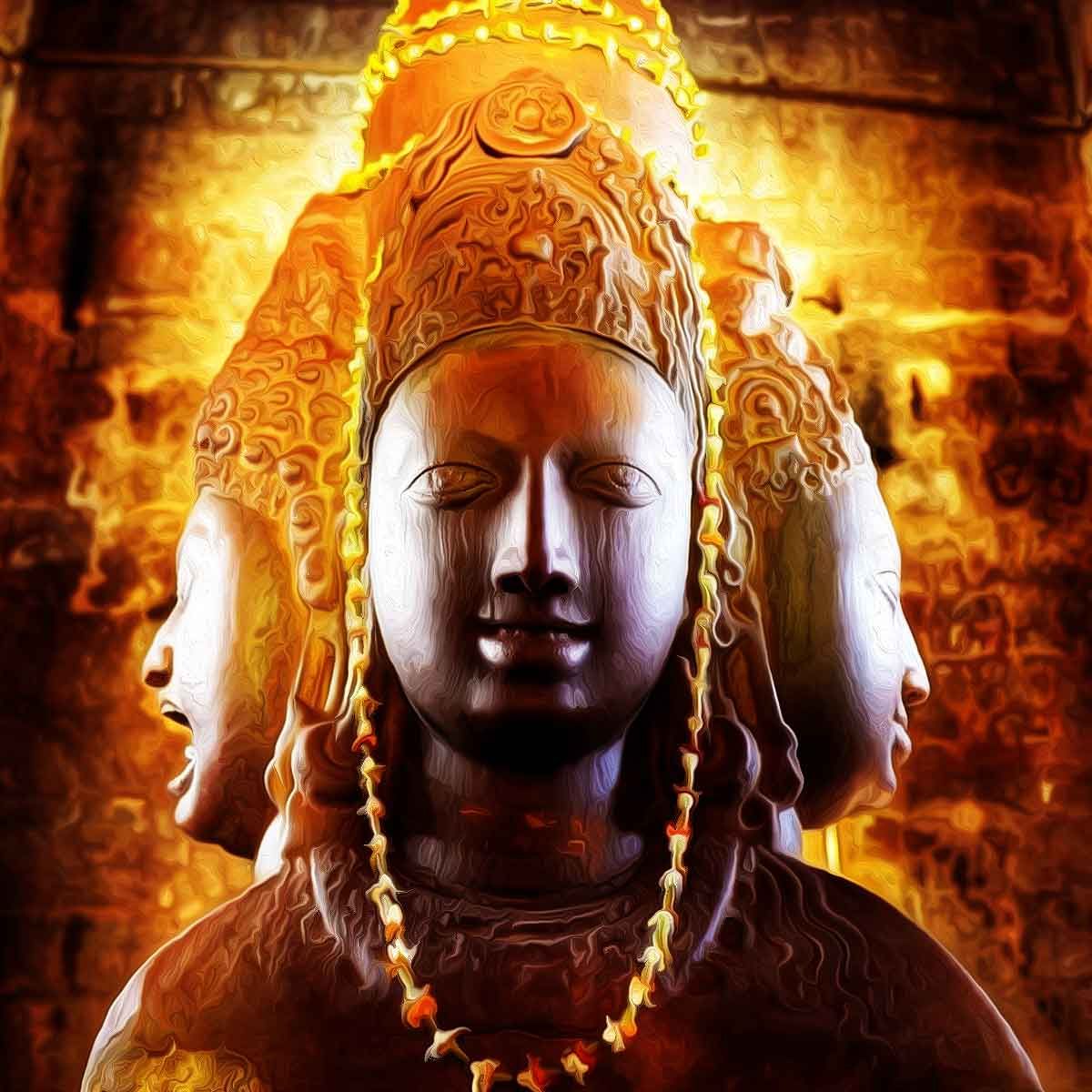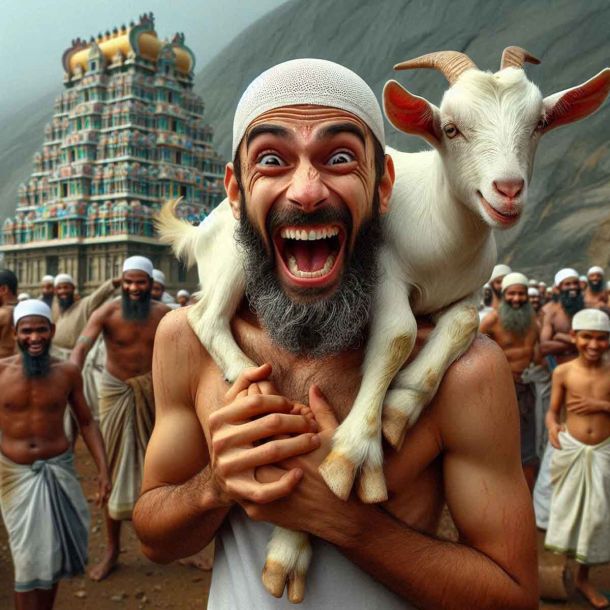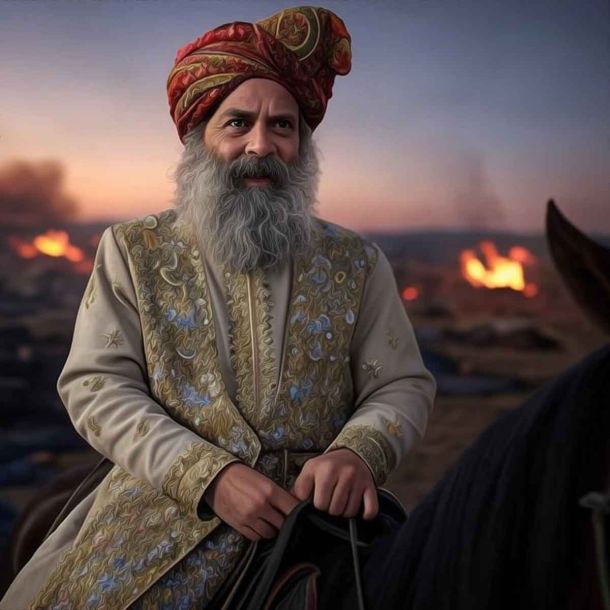More Coverage
Twitter Coverage
Satyaagrah
Written on
Satyaagrah
Written on
Satyaagrah
Written on
Satyaagrah
Written on
Satyaagrah
Written on
Join Satyaagrah Social Media
"Movement of formless to form - Shivalinga": Supreme manifested as God through a threefold manifestation of Shaiva iconography, first manifestation Para-Shiva, second Sadashiva and third Mahesha, iconography started during Kushan period

The pious month of Sravana is dedicated to Lord Shiva. Devotees visit Shiva temples to get darshan of the God, offer milk, water, and bilva leaves, and observe a fast on the four Mondays of the month.
Acquiring the knowledge of the Supreme is the goal of a devotee. The Supreme is manifested as God through a threefold manifestation. The first stage is nishkala (formless) where the Supreme is conceived in space. The second stage is when nishkala evolves into a partial form or a symbol. The third and final stage is the complete transformation into a full iconic form. In Shaiva iconography, the first manifestation is known as Para-Shiva, the second as Sadashiva, and the third as Mahesha.
|
While a Shivalinga represents the Para-Shiva, a Mukhalinga (with one or multiple faces) represents the Sadashiva. In a Mukhalinga, God reveals himself partially with his head projecting out. The agamas mention five heads of Sadashiva as Vamadeva, Sadyojata, Aghora, Tatpurusha, and Ishana. They represent five elements, directions, and colors. Vamadeva faces north, represents Jal (water), and is of red color. This is carved with a feminine aspect reflecting Uma, thus also called Umavaktra. Sadyojata faces west, represents Prithvi (earth), and is of the pearl-like color of the full moon. This is also known as Nandivaktra as it represents Nandi. Aghora faces south, represents Agni (fire), and is of dark blue color. This shows the ferocious character of the deity. Tatpurusha faces east, represents Vayu (wind), and is of golden yellow color. It reflects the Mahadeva form of Shiva. Ishana faces the sky, representing akasha (sky), and is of crystal-white color. This head is told to be beyond the ken even to yogis.
|
The earliest Mukhalinga is an inscribed panchamukha linga from Bhita (Prayagraj), now in the State Museum, Lucknow (2nd century BCE). Another unique linga from the same period is in the Parasurameswara Temple at Gudimallam (Andhra). The Gudimallam linga, in worship even now, has an image of a male figure carved over its shaft. This male figure, in the appearance of a hunter, represents Shiva, shown holding an axe and a ram and standing over a dwarf demon.
The iconography of Mukhalingas started taking shape during the Kushan period in northwest India and was soon crystallized during the Gupta period as we find many Mukhalingas installed in temples and shrines. While many Gupta-period Shivalingas are now adorning various museums and collections, two magnificent Shivalingas are still in their original shrines, one at the Udayagiri Cave and another in the Shiva Temple at Bhumara, both in Madhya Pradesh.
|
The Udayagiri caves near Vidisha (MP) are famous for some of the earliest Hindu iconographic representations. These caves were excavated during the reign of the Gupta king Chandragupta II (380-415 CE). Cave number 4 has an ekamukha linga enshrined inside. The face is round with the hair tied above in a knot and falling on the sides, making a frame around the face. Shiva’s third eye is placed vertically between his eyebrows. He is shown sporting a smile with his eyes half-closed. As the Mukhalinga faces east, it may represent the Tatpurusha aspect of Sadashiva.
|
The iconography advanced with time, resulting in new dimensions and transformations. The Chaumukhnath Temple, Nachna in Panna district (MP) is famous for its Chaturmukha linga (8th century CE). Inside the temple is a 5-ft-high linga with four faces carved on its shaft, which represent the Tatpurusha, Aghora, Vamadeva, and Sadyojata aspects of Sadashiva. The aspect of Ishana is conceived as a notional fifth head assumed over the top of the Shivalinga. The face of Aghora is very elaborately carved, reflecting this terrific aspect with an open mouth, contracted brows, and protruding teeth. Placing flowers, incense, and other offerings on the open mount of the Aghora face is a general practice of the devotees in the temple.
|
Lord Shiva manifests in his various forms to his devotees and each devotee approaches Him with what is convenient. Let the Lord have his grace on each devotee with all his blessings in this auspicious month and always.
References:
Saurabh Saxena - Founder of Puratattva, documentation of heritage sites
 Support Us
Support Us
Satyagraha was born from the heart of our land, with an undying aim to unveil the true essence of Bharat. It seeks to illuminate the hidden tales of our valiant freedom fighters and the rich chronicles that haven't yet sung their complete melody in the mainstream.
While platforms like NDTV and 'The Wire' effortlessly garner funds under the banner of safeguarding democracy, we at Satyagraha walk a different path. Our strength and resonance come from you. In this journey to weave a stronger Bharat, every little contribution amplifies our voice. Let's come together, contribute as you can, and champion the true spirit of our nation.
 |  |  |
| ICICI Bank of Satyaagrah | Razorpay Bank of Satyaagrah | PayPal Bank of Satyaagrah - For International Payments |
If all above doesn't work, then try the LINK below:
Please share the article on other platforms
DISCLAIMER: The author is solely responsible for the views expressed in this article. The author carries the responsibility for citing and/or licensing of images utilized within the text. The website also frequently uses non-commercial images for representational purposes only in line with the article. We are not responsible for the authenticity of such images. If some images have a copyright issue, we request the person/entity to contact us at This email address is being protected from spambots. You need JavaScript enabled to view it. and we will take the necessary actions to resolve the issue.
Related Articles
- "Nataraj, Nataraja, Jai Shiva Shankara Nataraja": One of mystical forms of Lord Shiva ‘Nataraj that represents the Lord’s cosmic dance that symbolizes both the destruction and the creation of the universe, revealing the cycles of death and birth
- Exclusive visuals of Shivling inside the wuzukhana of Gyanvapi mosque compound surfaces, motifs of Swastika, Trishul, Lotus, and Hindu deities engraved on walls of the basement: clearest sign yet of existence of a Hindu temple
- "ॐ तत्पुरुषाय विद्महे महादेवाय धीमहितन्नो रुद्रः प्रचोदयात्": Ancients raising again - A dream helped in discovery of 1000 year old massive 6ft Shivalingam on auspicious day of Deepavali at Arasampalayam, TN near sangam of Amaravathy & Kudakunaaru rivers
- "Crumbling Chronicles, their stories yearn to be retold": Each intricately carved stone horse in the Pir Panjals carries a profound secret. Once symbols of Bharat's grandeur, now overshadowed by indifference, and their plea for acknowledgment grows louder
- "Where snakes are family, fear sheds its skin": Maharashtra, in Shetpal village cobras roam freely amongst residents, a unique testament to India's deep-rooted harmony with nature, challenging perceptions and captivating visitors with its serpentine charm
- Calcutta High Court's landmark judgment illuminates the secular essence of Durga Puja, reinforcing citizens' constitutional rights and India's unity in diversity, a celebration beyond religion, it embodies vibrant spirit of communal harmony & tradition
- "बजरंगबली": Ancient Hanuman temple with the Hanuman Chalisa inscribed discovered near the Langai River in Patharkandi, Sri Bhumi; locals began reconstruction, backed by ₹1.5L from Army officer Sagar Sinha, aiming to attract pilgrims nationwide
- "Faith is the strength by which a shattered world shall emerge into the light": Vishnu murti found in Bangladesh while digging for graveyard, the lady being interviewed, when asked about the probable price, said it’s our heritage and heritage is priceless
- Sculpture of seated Brahma of Angkor in Cambodia was most likely made during the reign of the Buddhist King Jayavarman VII (r. 1181-ca. 1218), when many Hindu deities were incorporated into the practices of Khmer Buddhism
- "ॐ नम: शिवाय कालं महाकाल कालं कृपालं ॐ नम:": Statue of Belief (Vishwas Swaroopam Mahadev), world’s tallest Shiva statue unveiled in Nathdwara of Rajasthan, magnificent statue is a sight to behold, standing 369 feet tall is visible from 20 km away
- "Pure devotion is a vessel for divine grace": Envision a monumental statue of Lord Ram, reaching skywards to a staggering 108 feet! This grand spectacle, representing millennia-old Vaishnava tradition will grace Andhra Pradesh's Kurnool district
- "Temple will be an ever-present reminder that God intended the family to be eternal": Thirunakkara Mahadevar Temple situated in the heart of Kottayam is one of the 108 revered Shivalayas in Kerala, preserves sculptures and murals of Hindu deities
- "Faith moves mountains, and stones tell tales": Omkareshwar to Ayodhya - A journey not just of distance but of deep-rooted faith, carved from the sacred Narmada waters, the 600kg Narmadeshwar Shivling's odyssey resonates the hymns of billions in unison
- Construction of Ram Mandir in Ayodhya is in full flow with the foundation work finished, main contractor for construction is Larsen & Toubro while Tata Consulting Engineers are project management consultant
- "Who is Hindu": In real sense, grand tradition can be defined and understood as ten thousand faiths gathered in harmony under a single umbrella is Hinduism, Sanatan Dharma, where dharma is the duty, and karma is our actual behaviour
























